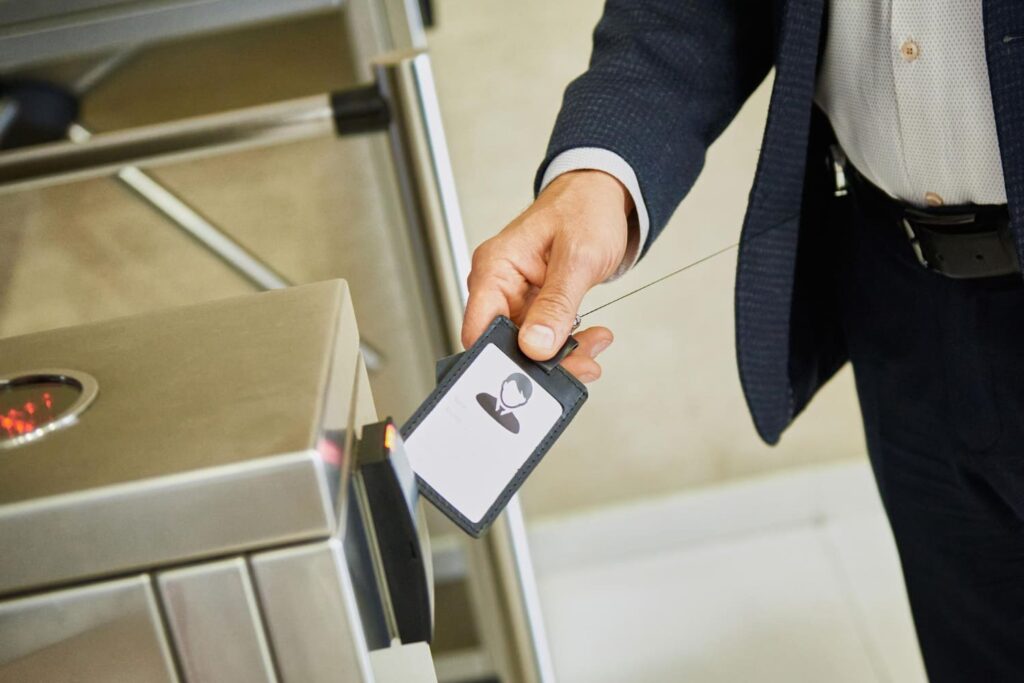Attackers have limitless ways to gain access to your data, from taking advantage of digital vulnerabilities to trespassing on your physical security—piggybacking is one example. Piggybacking actors pose a significant
How do we know someone is piggybacking on us? How can we prevent it?
Ahead, we’ll learn how this security attack works and how to prevent the whole incident from happening. Read on!
What is Piggybacking?

Piggybacking happens when an attacker follows an authorized person into restricted areas or gains access to digital resources using someone else’s set of credentials, such as a username or password.
Once inside, they can steal sensitive information, compromise privacy, or even disrupt operations.
A survey revealed that 48% encountered piggybacking, and 54% discovered doors left open or unlocked.
How Does Piggybacking Work?

Piggybacking works in several steps:
Physical Access
The first layer of the attack targets physical access. Typically, this is done by pretending to be an employee without an access card and asking other employees to “piggyback” them to enter the premises.
Observing Authentication
Once inside, the attacker observes the authentication process to identify the best opportunity to strike without being suspicious. This could involve watching employees enter their passwords or PINs, swipe their access cards, or note the times when access controls are less strict.
Mimicking Credentials
After enough data for observation, they will start mimicking credentials. They might create counterfeit access cards, replicate key fobs, or another surveillance method like shoulder surfing.
Accessing the System
Using the mimicked credentials, attackers can now interact with the company’s network, databases, or any other digital resources. This may lead to data theft, malware insertion, or other malicious activities.
Covering Tracks
When all is done, these attackers will cover up their tracks to avoid detection by erasing digital footprints as access log deletion or system file edits and leaving the scene before their presence is detected.
Maintaining Access
Many attackers’ final goal is to maintain access over time to make their returning exploitation easy and smooth. This could involve creating backdoors in the system, establishing remote access, or even planting devices that allow for continued data siphoning.
Differences Between Piggybacking and Tailgating

There is one important difference that differs between piggybacking and tailgating: awareness.
In piggybacking, the authorized person is aware of the intruder following them but assumes legitimacy.
In contrast, tailgating occurs when an unauthorized person closely follows an authorized individual without their knowledge, slipping into secure areas unnoticed.
Examples of Piggybacking

Piggybacking scenarios can happen in various settings.
Office Buildings
In office building settings, a stranger may slip into an office building behind an employee or a crowd of employees who hold the door open, assuming they are part of the workforce.
Data Center Access
A visitor follows a data center technician or IT staff member into the data center, claiming they need to check something urgently.
Manufacturing Facilities
A non-employee walks closely behind a factory worker, bypassing security checkpoints. To appear legitimate, they may carry tools or wear a uniform.
Access Card Exploitation
An unauthorized actor obtains an employee’s access card (either physically or through social engineering) and uses it to gain entry to secure zones, offices, or labs.
Social Engineering Tactics
This could involve posing as a contractor, delivery person, or repair technician to gain entry. For instance, a scammer might call an employee claiming to be from IT support and request remote access to their computer.
How to Prevent Piggybacking Attacks

Follow these steps to protect your data from these attacks.
Strong Access Controls
Use advanced access control systems to monitor and regulate entry points.
Physical Barriers
Implement turnstiles or similar barriers to ensure one person at a time can enter with authorization.
Regular Security Audits
Conduct audits to identify and rectify vulnerabilities promptly.
Educate Employees
Regular training on security protocols and recognizing suspicious behavior is crucial.
Frequently Asked Questions
What are the risks associated with piggybacking?
Some risks include malware injection, unauthorized data access, network performance degradation, and legal implications.
What are the technical vulnerabilities that enable piggybacking?
These can be enabled by weak authentication, misconfigured security settings, inadequate access control, and insufficient encryption.
How is the threat of piggybacking evolving in the cybersecurity landscape?
The threat of piggybacking nowadays requires more sophisticated detection and prevention mechanisms to combat increasingly complex and deceptive methods.
Conclusion
Piggybacking is a threat to data security, especially physical security. This malicious attack can impose various risks on your organization’s data, from data theft to deteriorating legal implications.
If you want to ensure cybersecurity protection for your data, contact Fluxgate to enhance it!
